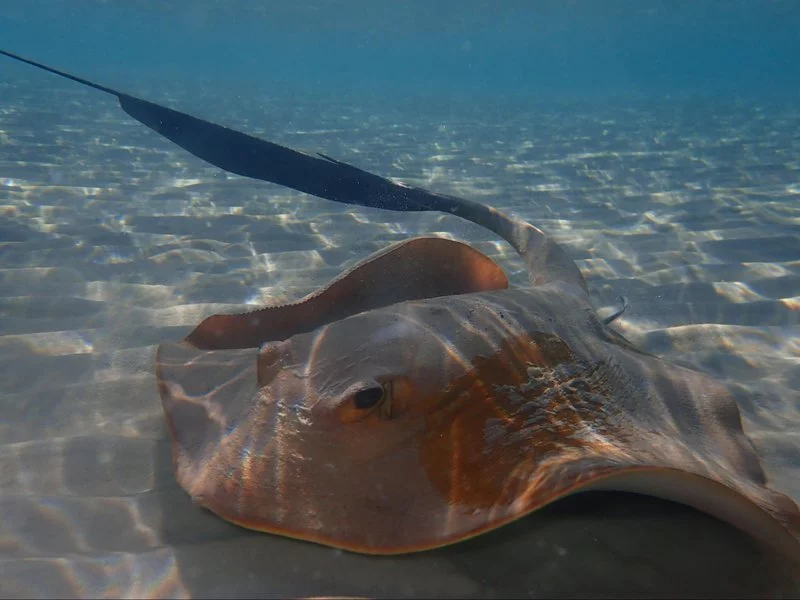Stingrays are a group of fishes which are, believe it or not, closely related to sharks, that can be found all over the world in both marine and freshwater environments. Both stingrays and sharks are classified in a group called Chondrichthyes, being part of this group means that they have a skeleton with bones made from cartilage. Although they are closely related stingrays and sharks look quite different. Stingrays are flattened and have their gills on the undersides of their body. Unlike most sharks stingrays also don't have the typical "sharp teeth", stingrays have serrated plate-like teeth which they use to crush their food. The main difference between the two and perhaps what stingrays are best known for, is their stinging barbs and venom. These barbs are located on the dorsal (top) surface of the tail and are serrated down both sides. They also have a groove running down the middle which allows the venom to flow from the venom gland and down the barb.
These barbs and painful venom have given stingrays a bit of un undeserved reputation. They are not normally an aggressive animal and will only sting when they feel threatened or are being physically harmed. Unfortunately for people these stings are most likely to occur while swimming or wading shallow water as the stingrays will sit motionless and often covered in sand on the bottom. However while the venom is quite painful it is not considered to be fatal to humans and with a bit of care and awareness these stings can be avoided all together.
Here in the Whitsundays stingrays are a common character on our coral reefs and beaches. Perhaps the most common species sighted in the region is the cowtail stingray. This species has quite a wide distribution and can be found in warm tropical waters of the Indo-Pacific region. In these tropical regions they prefer to inhabit sandy bottoms near the coast and around coral reefs, they can also be found at depths of up to 60 meters.
The cowtail stingray is a usually uniform dark, reddish-brown colour but can also be grey or almost black on the top and white on its belly. The end of their tail has a broad black skin flap at the tip, which is where the name cowtail comes from, and one barb on the dorsal (top) surface of the tail. They also have two spiracles located in the top side just behind their eyes. Spiracles are respiratory openings which allow the animals to breath easily while the mouth, on the underside, is close to the sand. They draw oxygenated water from above into the mouth and then put over the gills. The cowtail is a large species and when fully grown these rays can reach up to 3 meters from head to tail,1.8 meters from wing tip to wing tip and can weigh a massive 250 kilograms.
Like most rays the cowtail stingray is a bottom feeder and will forage on the seafloor, sifting through sand and rubble to find a meal. Their diet is quite diverse and they will feed on a number of different organisms which include bony, bottom dwelling fishes, crustaceans, molluscs, polychaetes (marine worms). When feeding they will press their dorsal fins onto the bottom and create a sucking force with their mouths which pulls their prey in where they then crush it with their plate like teeth.




